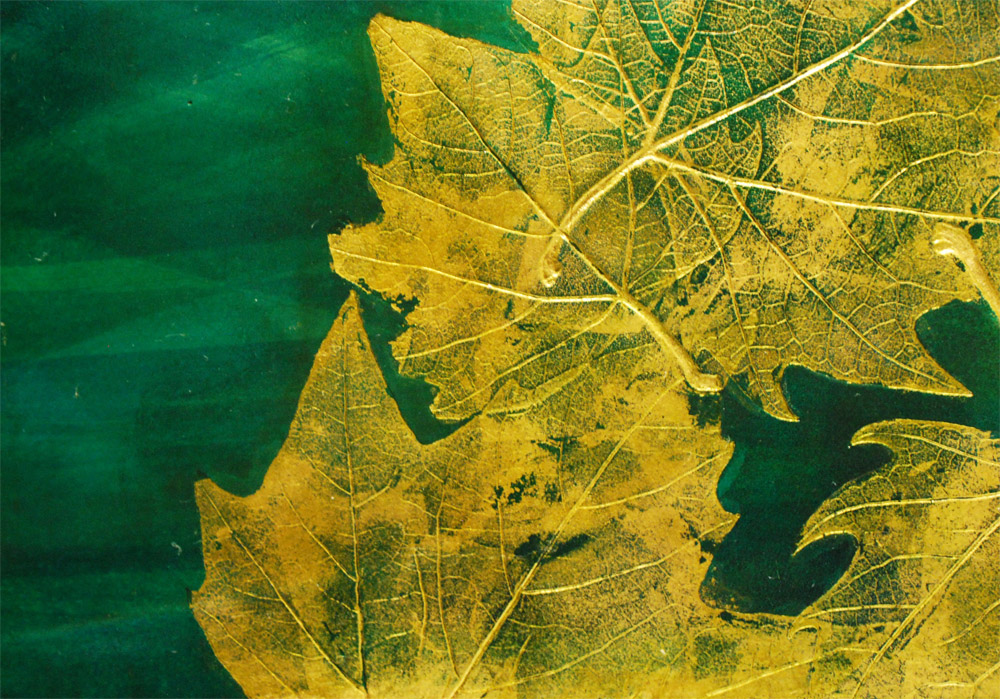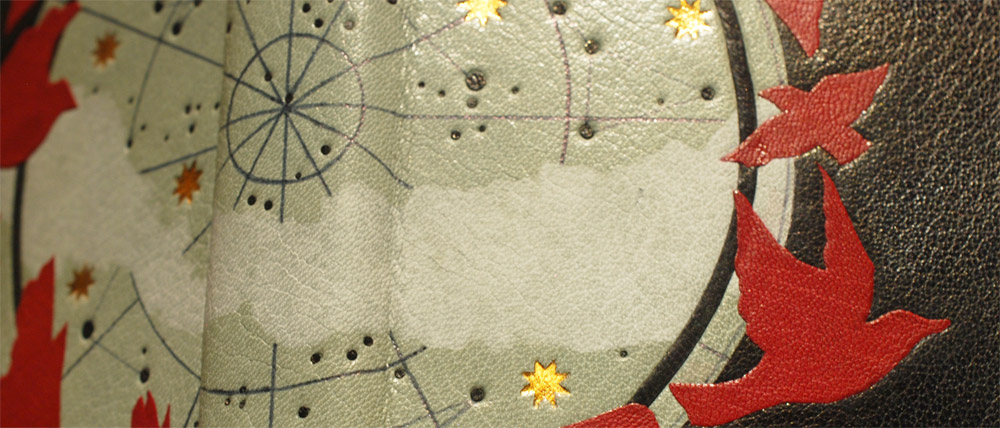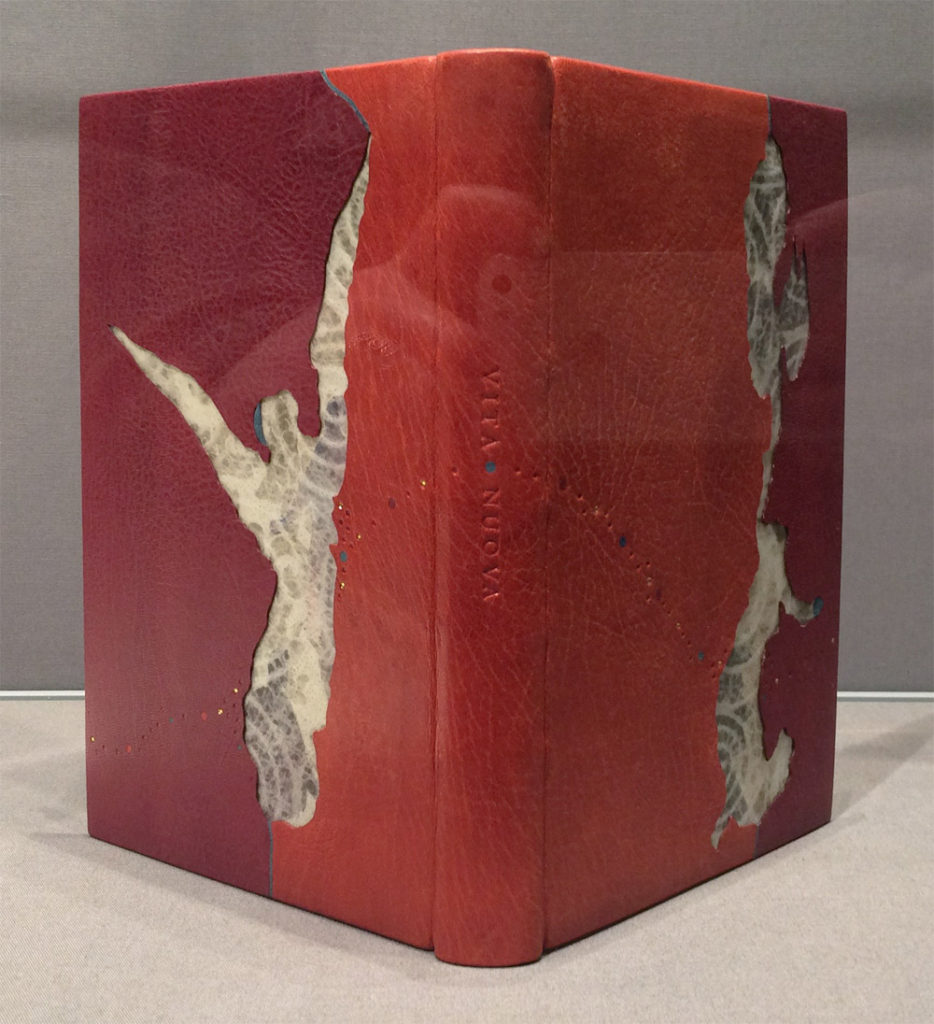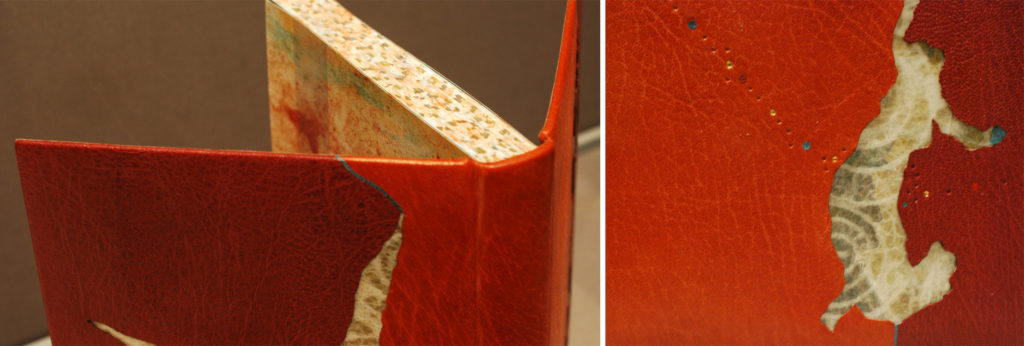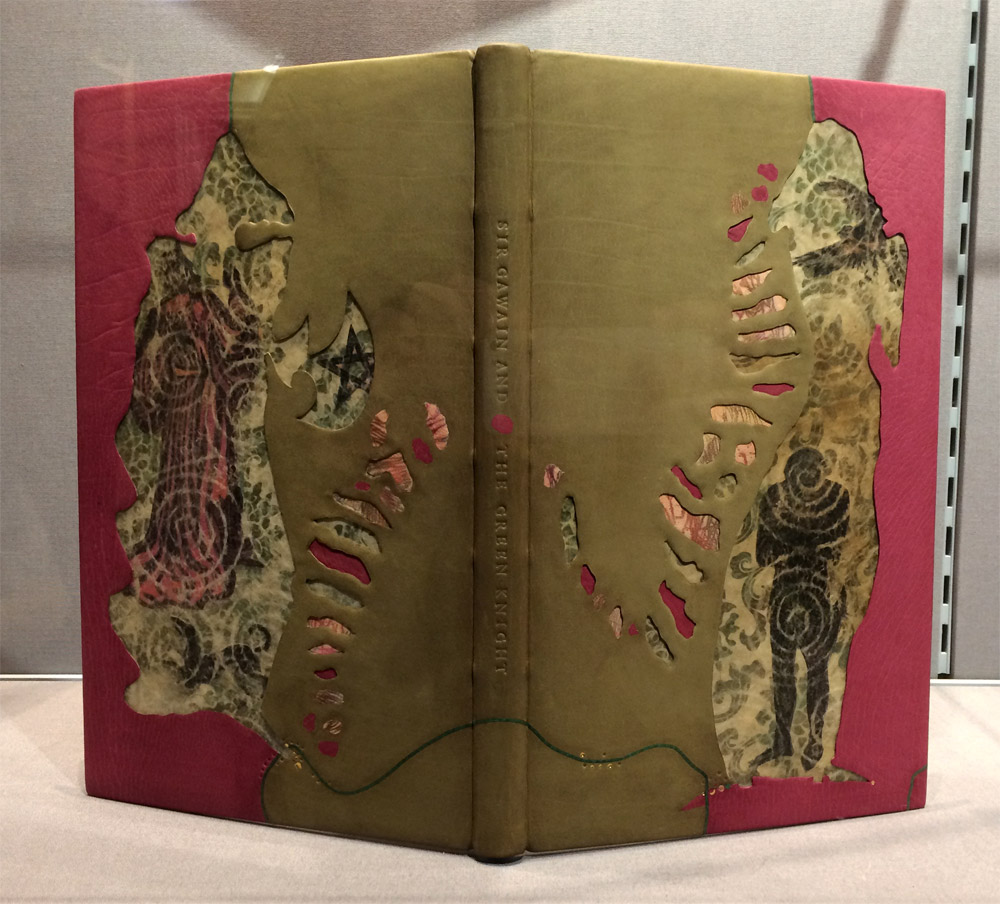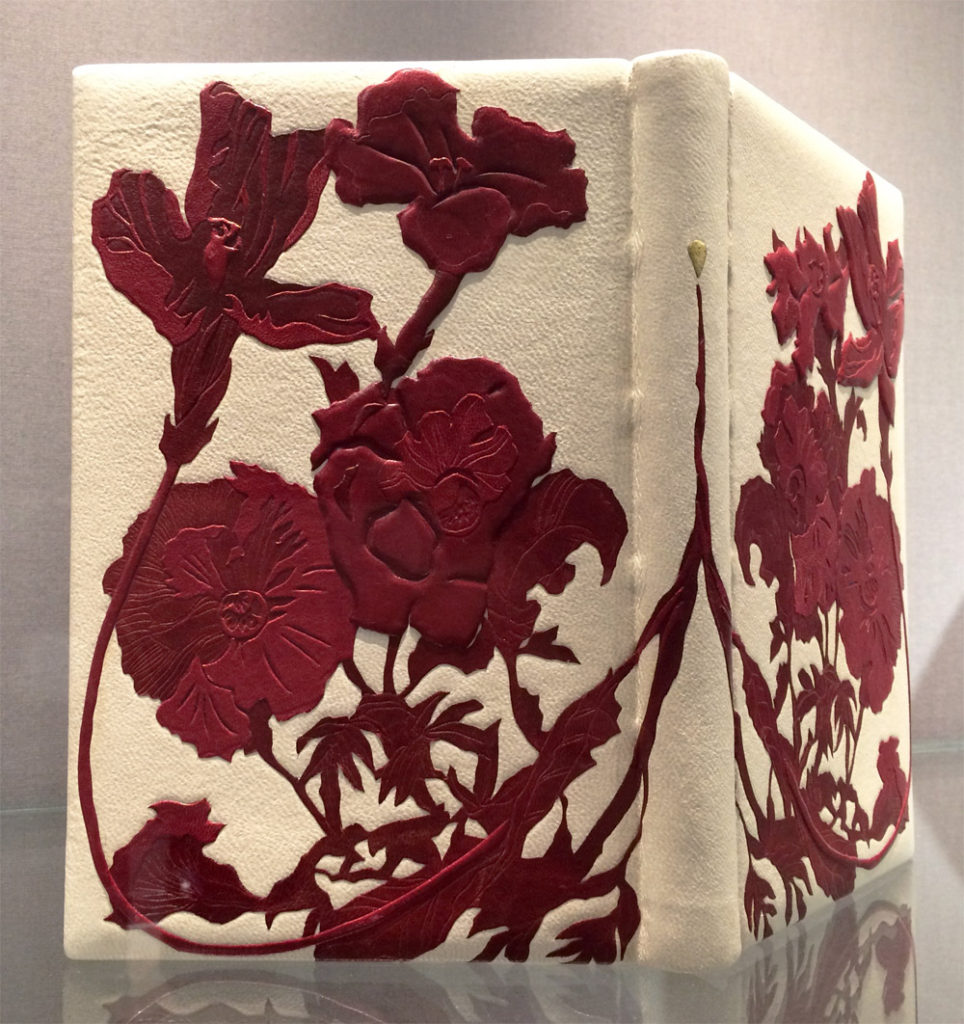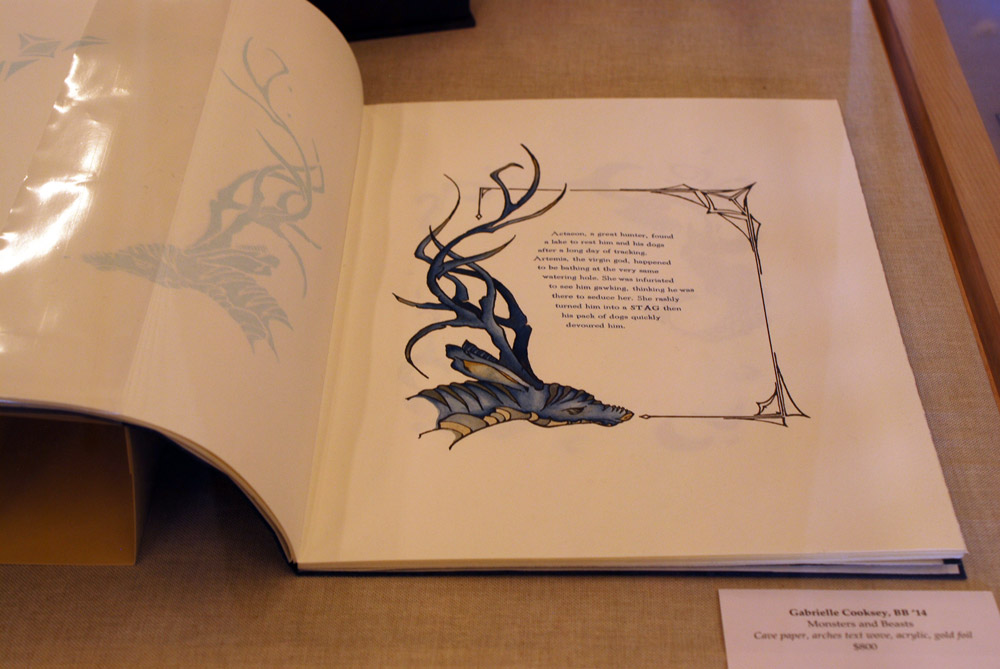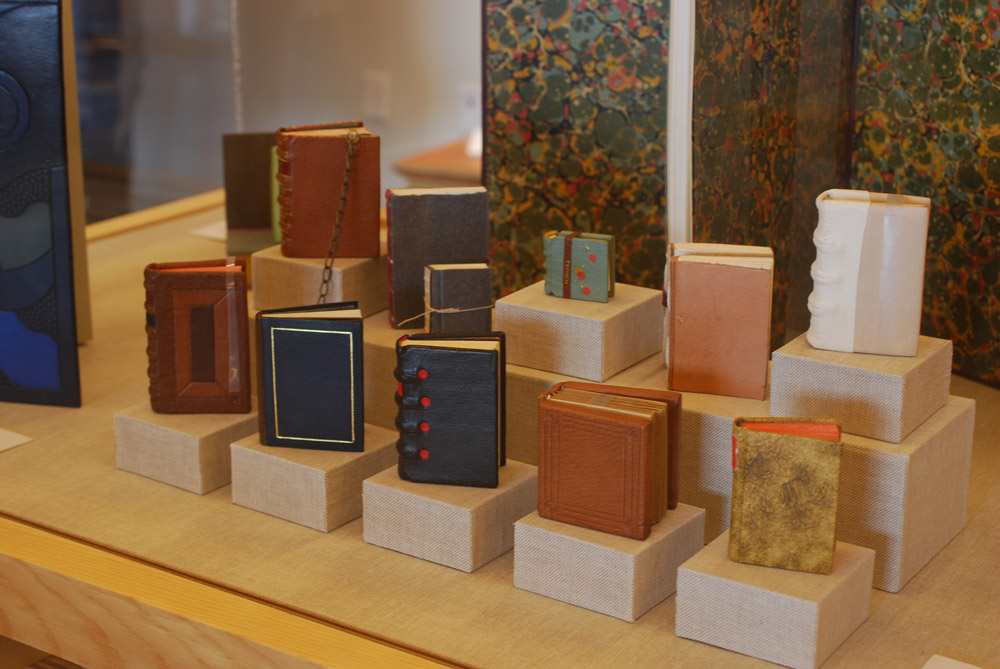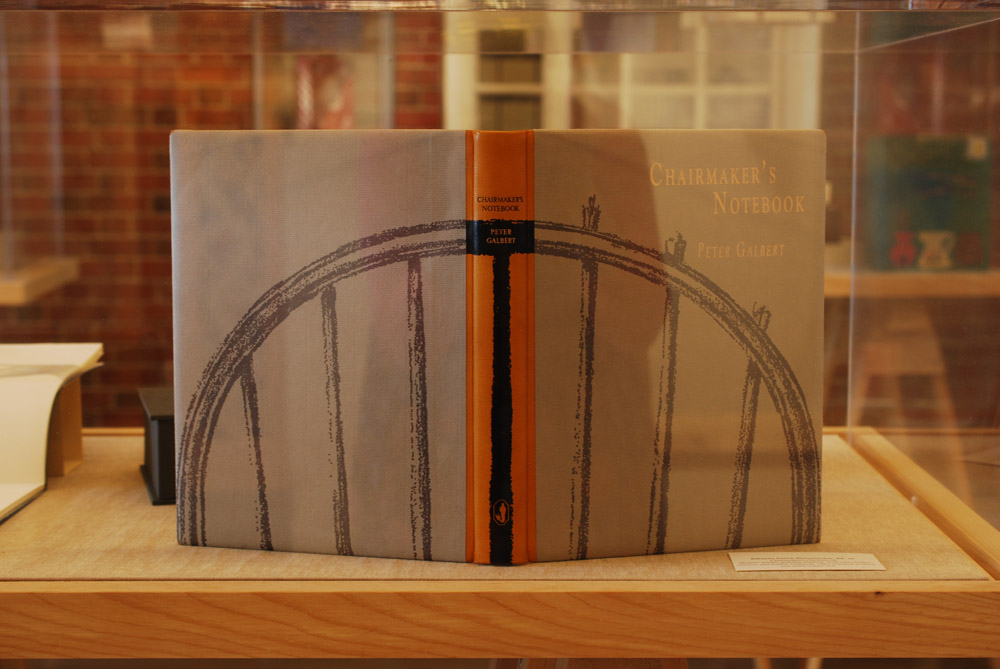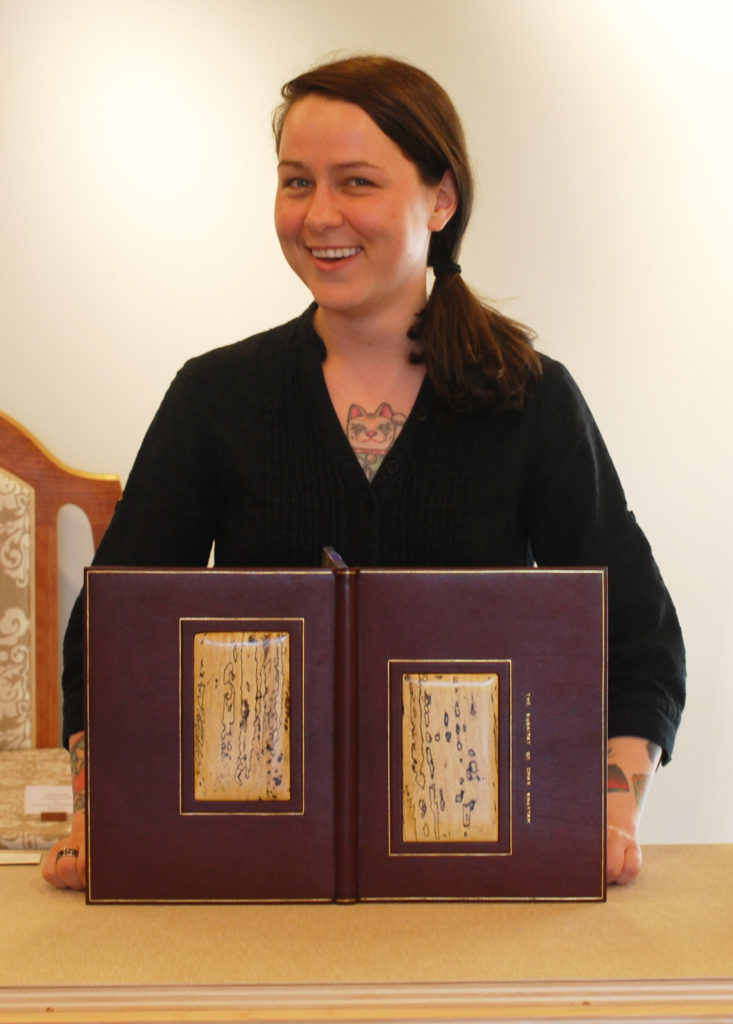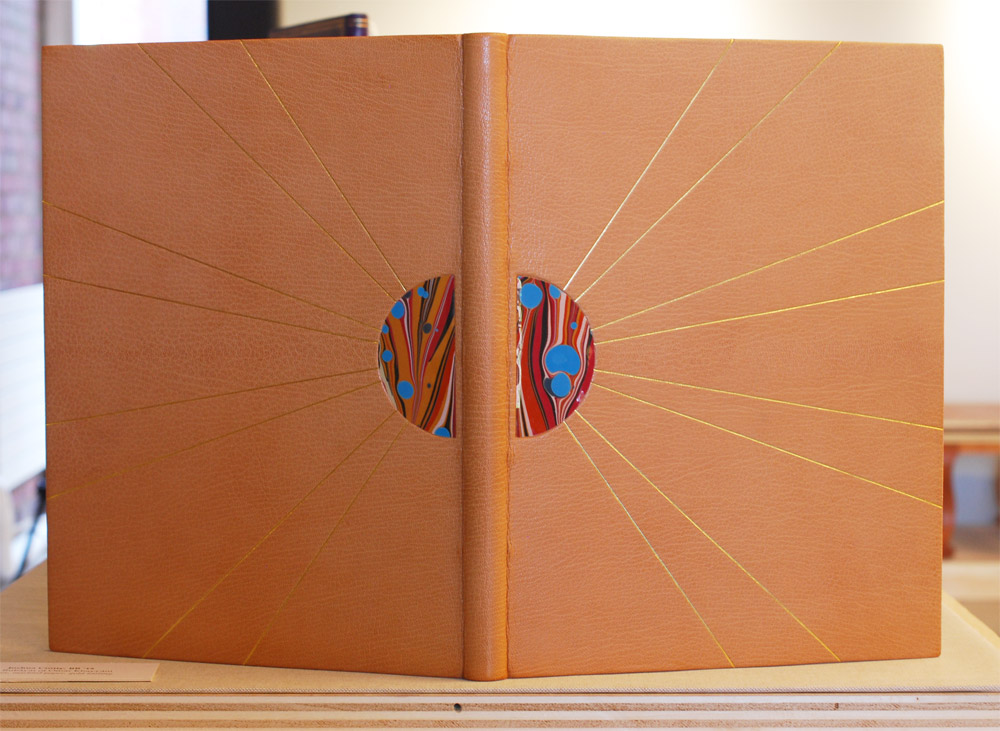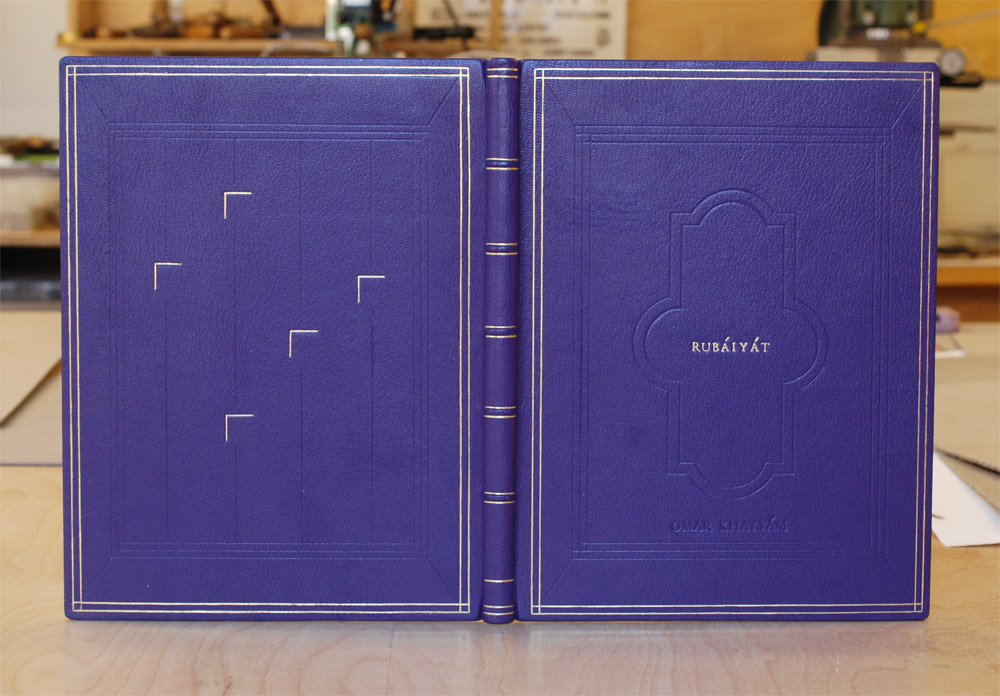During my visit to London, I was delighted to have my trip overlap with the 2016 Annual UK Bookbinding Competition Exhibit. A collection of bindings are on display at the St. Bride Foundation and during the opening reception on November 10th, many of the exhibitors received awards for their work. The exhibit is sponsored by Designer Bookbinders and The Folio Society, who provided the set book: La Vita Nuova by Dante Alighieri. Written between 1292 and 1294 as an innovative mix of prose and poetry, La Vita Nuova is considered Dante’s fist major work. The text is an expression on the torments and joys of young love before transcending into the ether.
In addition to the set book, many of the binders chose to submit an additional binding. If you are in the London area, the exhibit will be on view until November 24th. Check out my some of my favorite pieces from the show. I absolutely loved Ann Tout and Glenn Malkin’s books, but the bright red leather on their bindings were difficult to photograph well (on that line, please excuse any awkward reflections and glare).
Kaitlin Barber
Kaitlin Barber‘s interpretation of Vita Nuova extended beyond the book form with her 3-dimensional piece representing Dante’s dream of Beatrice in flames. The binding is covered with hand-dyed goatskin and decorated using the Sunago technique in gold leaf. Kaitlin’s binding won the St. Bride Foundation Prize for Finishing.
Kaitlin’s second submission was In Smoke: Ten Variations on Eugenio Montale by Gary Michael Dault. Kaitlin created another beautiful binding using a hand-dyed leather that creates so much movement.
The front and back boards have been debossed with leaves, with the front accented in gold leaf. The consistent themes of nature and repeated imagery of foliage and gardens within the text inspired Kaitlin’s design. The second place Clothworkers’ Prize of the Open Choice Book was awarded to Kaitlin’s second entry. I am so happy for Kaitlin, as a fellow North Bennet Street grad, it’s so great to see her skill and creativity grow. Congrats Kaitlin!
Bec Britain
Bec Britain created this gorgeous binding for Vita Nuova. As the exhibit pamphlet reads “the design reflects Dante’s evolving sense of the limitations of courtly love and its transition into sacred love.” The central design is created with crimson leather onlays, tooling and ink. Bec was awarded the Harmatan Ltd Leather Prize, which she completely deserves. Her combination of techniques created such a sleek and captivating design.
Jeanette Koch
Jeanette Koch’s binding for Vita Nuova is covered in terra-cotta and burgundy goatskin. The leather is cut-out to reveal laminated decorative paper and transparent vellum. I love the way Jeanette transformed the decorative paper in her design.
The edges are decorated with watercolor, palladium and gold leaf. Jeanette was honored with the Lisa von Clemm Prize for this binding.
Jeanette also submitted a binding of the late 14th-century Sir Gawain and the Green Knight, an Arthurian story on chivalric romance.
This is one of my favorite bindings from the exhibit. The judges seems to agree, as Jeanette received The Judges’ Award and the Arthur Johnson Prize for this binding. Covered in green and burgundy French goatskin; Jeanette chose a beautiful green skin with stunning grain detail at the spine.
Like Vita Nuova, this binding also has cut-outs revealing laminated decorative Japanese paper and vellum.
Kaori Maki
I was so in awe of Kaori Maki‘s binding for Vita Nuova, which was bound in alum-tawed goatskin. Kaori decorated her binding with an intricate and bold floral design using back-pared, cushioned onlays dyed red. Kaori’s binding received second place for The Folio Society Prize for the Set Book, which was so well deserved, her decorative work was so unique and captivating.
Yuko Matsuno
The most celebrated binding of the evening was crafted by Yuko Matsuno. Her binding of Through the Woods by H.E. Bates is bound in grey goatskin with decorative underlays. Ink-dotted calfskin and Zerkall paper peeks through a forest silhouette with animal onlays of colored Gampi and cushioned calfskin.
The edges and endpapers are decorated using soft pastel to mimic the imagery from the cover. Yuko received first place for The Clothworkers’ Prize for the Open Choice Book and the ultimate prize: The Mansfield Medal for the Best Book in the Competition.



